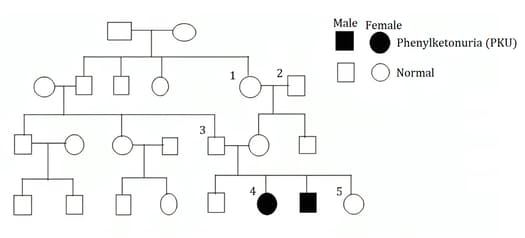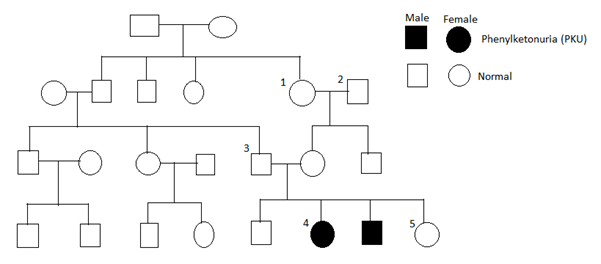The family tree (pedigree) in figure 16.3 shows the incidence of a genetic disease called phenylketonuria (PKU) in four generations of a family.

If PKU is caused by a recessive allele, explain why it is unlikely that this allele first appeared in person 4.


Important Questions on Inheritance
The family tree (pedigree) in figure 16.3 shows the incidence of a genetic disease called phenylketonuria (PKU) in four generations of a family.

In the space below, deduce the possible genotypes of person 1, 2, 3 and 4. Use the symbol q for the PKU allele and the symbol Q for the normal allele.
The family tree (pedigree) in figure 16.3 shows the incidence of a genetic disease called phenylketonuria (PKU) in four generations of a family.

Person 5 is worried that her children might have PKU. She talks to a genetic counsellor. What might she be told?
In fruit flies, as humans, males have an X and a Y chromosome, and females have two X chromosomes.
There is a gene on the X chromosome that affects eye colour. The dominant allele of this gene produces red eyes, and the recessive allele produces white eyes.
Suggest suitable symbols for the two alleles of this gene.
